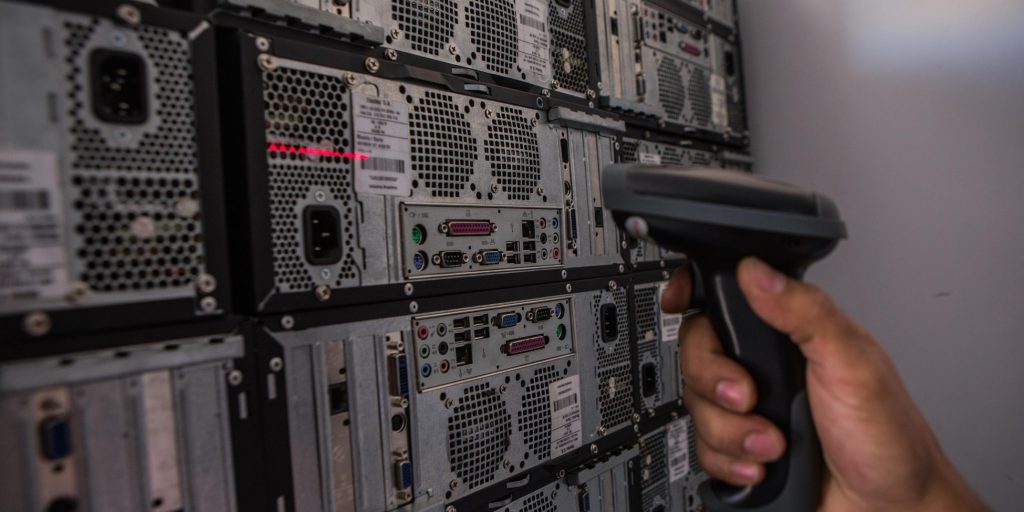Modernizing state and local IT to meet new demands and drive long-term financial efficiency
State and local governments are adapting to a long-term distributed workforce – bringing an increased need for digital services, IT infrastructure, and training. While health and safety precautions are at the forefront of leaders’ minds, this shift also brings an increased need for digital services, IT infrastructure, and resources to support a remote workforce.
At the same time, the COVID-19 pandemic had triggered budget cuts and furloughs within state and local governments across the country.
The National Governors Association says $500 billion in state and local aid is needed to make up for lost revenue. Many states including Maryland, California, Michigan, and Iowa are still asking the federal government for money to stay afloat.
The loss of state and local revenue places great pressure on IT departments to reduce costs and at the same time, deliver expanded digital services and support a newly distributed workforce.
Every state has a responsibility to recoup as many dollars as possible to offset budget shortfalls and anticipated temporary workforce reductions – and meet new needs. Short-term, cost-cutting efforts are easy, but longer-term cost optimization planning via collaboration across teams is more difficult.
Against this backdrop, IT teams can pursue potential cost savings as well as long-term efficiency by eliminating outdated technology and processes, gaining better visibility into the state and local government resources, and centralizing operations and security.
Understand and simplify the IT environment
State and local IT teams are currently working to create a secure and usable telework environment. However, it is hard to avoid redundancy and waste with silos of data stuck in applications that do not communicate with one another. Leaders end up with incomplete visibility into the overall environment, which leads to overspending.
IT teams need the ability to understand if and how the agency is using the technology tools they already own. Next, they must consolidate similar tools and eliminate tools they no longer need – saving on license, upgrades, maintenance, and support costs.
Additionally, as state and local governments grapple with increased demands and leaner teams, the focus must be on service automation and optimization. This might mean creating digital workflows that streamline and simplify routine tasks, freeing up time for IT teams to focus on priority projects.
Consolidate and centralize operations
During the pandemic, state and local governments have seen a spike in demand for their services and support programs such as hospitals, unemployment insurance, healthcare, and living costs.
As they consider the path forward, many will restructure to survive. State and local technology systems are decentralized, usually with separate systems of human resources, emailing, collaboration tools and very likely – software and hardware procured by a department other than IT that no one knows about.
This presents an opportunity for cost savings by improving visibility into technology tools and infrastructure, eliminating unused tools, and reducing the use of redundant tools across departments. A simpler, centralized environment is easier (and costs less) to manage.
Consider the State of Ohio which migrated 90 percent of its IT infrastructure to the cloud and increased the adoption of shared services in fiscal year 2012. As a result, over the past several years the state has achieved more than $162 million dollars in documented savings.
Strengthen security to reduce risk
A distributed workforce brings increased cyber risk; more endpoints, more potential points of failure. In a traditional, decentralized environment, leaders typically have limited visibility of their endpoints, as well as data overload from a daunting amount of security alerts. It’s critical to stay ahead of cyber adversaries – a single decision made on yesterday’s data could elevate the security risk to the institution. Operations and security teams need a platform to break down the data and information silos, and help ensure both teams are using consistent and accurate data for risk management.
Leaders need the ability to quickly identify and address the most pressing threats. Often, IT teams rely on a measurement of risk – or a vulnerability risk score – that is not based on real time data. Risk scores are living, breathing things, and must be based on real-time data to protect the institution’s environment and overall vulnerability. Lack of visibility into the network makes risk assessments more difficult for IT teams, and creates unknown vulnerabilities.
By taking a holistic, platform approach to technology risk management, security teams can not only reduce risk and improve security, but they can reduce the number of point products, reallocate budget and resources, and justify future budget requests for critical security activities – all while providing a more comprehensive view of the security landscape that enables more strategic business decisions.
Getting from here to there
As state and local government leaders rethink and reallocate to ensure long-term financial stability, leaders should look to unified endpoint management to help gain the visibility needed to drive IT cost efficiencies, consolidate operations and IT security, and improve business value. State and local governments need accurate data in real-time, so they can make the best decisions and cause the fewest disruptions to future learning processes.
Successful IT and security strategy starts with the basics: visibility and control across the environment. But getting the basics right is not easy, and IT and financial decision makers need a modern environment to help save time and money while reducing disruption.
Gary Buonacorsi is Chief IT Architect and SLED Chief Technology Officer for Tanium.




















